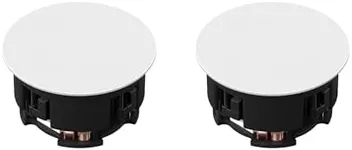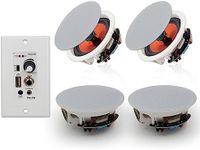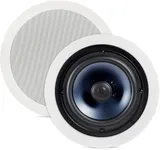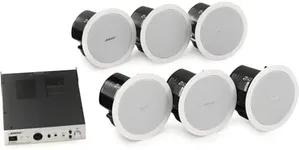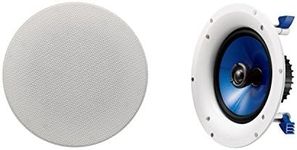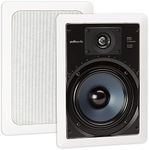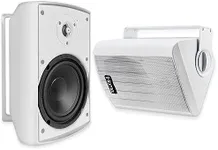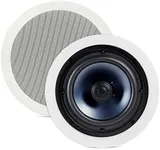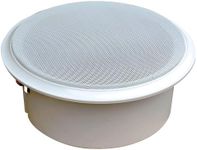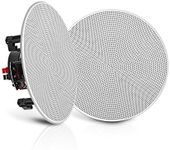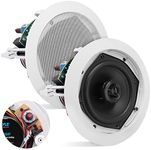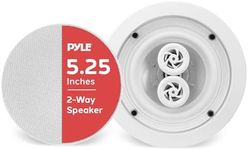Buying Guide for the Best Ceiling Speaker For Bathroom
Choosing the right ceiling speaker for your bathroom can greatly enhance your audio experience while ensuring durability and safety in a moisture-prone environment. When selecting a ceiling speaker, it's important to consider several key specifications that will help you find the best fit for your needs. Understanding these specs will guide you in making an informed decision that balances sound quality, durability, and ease of installation.Water ResistanceWater resistance is crucial for bathroom ceiling speakers due to the high humidity and potential for direct water exposure. This spec indicates how well the speaker can withstand moisture. Look for speakers with an IP (Ingress Protection) rating, where a higher number means better protection. For bathrooms, an IP rating of at least IPX4 is recommended, which means the speaker can handle splashes of water. If your bathroom is particularly steamy or you plan to install the speaker near the shower, consider a higher rating like IPX6 or IPX7 for added protection.
Sound QualitySound quality is determined by factors such as frequency response, sensitivity, and driver size. Frequency response indicates the range of sounds the speaker can produce, with a wider range offering better sound reproduction. Sensitivity measures how effectively the speaker converts power into sound, with higher sensitivity providing louder sound at lower power. Driver size affects the depth and clarity of the sound; larger drivers generally produce better bass. For a bathroom, a balanced sound quality with good midrange and treble is ideal, as bass can be less pronounced in smaller, enclosed spaces.
Power HandlingPower handling refers to the amount of power (measured in watts) a speaker can handle without distortion. This is important to ensure your speaker can handle the output from your amplifier or receiver. Speakers with higher power handling can produce louder sound without damage. For a bathroom, you typically don't need extremely high power handling, as the space is smaller. A speaker with a power handling range of 20-100 watts is usually sufficient for most bathroom setups.
Installation EaseInstallation ease is about how simple it is to mount the speaker in your ceiling. Some speakers come with templates and mounting hardware that make installation straightforward. Consider whether you need a speaker that fits into existing light fixtures or if you need to cut new holes in the ceiling. If you're not comfortable with DIY installation, you might want to choose a model that offers professional installation services. Ensure the speaker comes with clear instructions and all necessary components for a hassle-free setup.
ConnectivityConnectivity options determine how you can connect your speaker to your audio source. Wired speakers typically offer more reliable sound quality, but require running cables through your walls or ceiling. Wireless speakers, such as those with Bluetooth or Wi-Fi capabilities, offer more flexibility and easier installation, but may require regular charging or battery replacement. For a bathroom, wireless speakers can be more convenient, but ensure they have a stable connection and sufficient range to avoid interruptions.
Size and DesignSize and design are important for both aesthetic and practical reasons. The size of the speaker should fit well within your ceiling space without being obtrusive. Consider the design and color of the speaker grille to ensure it matches your bathroom decor. Some speakers offer paintable grilles for a custom look. Additionally, ensure the speaker's size is appropriate for the room's acoustics; smaller speakers may be sufficient for compact bathrooms, while larger bathrooms might benefit from multiple speakers or larger units.
